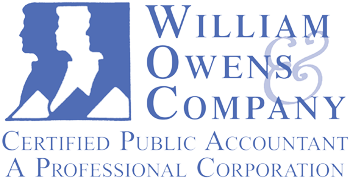
Its year-end review time at many companies. Instead of dreading it, or worrying about giving negative feedback, why not turn it into a chance to improve morale and engagement? You can do this by including a professional development plan with your review.
Losing employees impacts your bottom line. You could have to hire a recruiter to find their replacement, there will be lost productivity while you train the new person, and if they have been disengaged for a while you may find that their past work wasn’t up to par.
It costs U.S. companies an average of $4,000 to hire a new employee, and it takes an average of 24 days to find them. During the COVID-19 pandemic it may be even more difficult to find and train new talent, particularly if your office is working remotely. There are many benefits to working with your existing talent.
Keeping employees engaged both ensures a productive workforce but also saves you time and money. A professional development plan is one way that you can retain and develop current employees - it tells the employee that you’re invested in their future. You want to see them succeed and are taking steps to encourage growth. If they see a path forward in their career at your organization, they’re less likely to start applying for jobs outside the company.
What to Include in a Professional Development Plan
Many companies include the employee in preparing their professional development plan. This gives them a higher level of buy-in and ensures that their goals align with the company’s needs and growth.
When working with an employee on a professional development plan, you’ll customize it to their career goals. However, each bullet point, section, or paragraph, will address the following components.
Concrete Goals
Most people who write reviews are familiar with the goals acronym SMART - Specific, Measurable, Actionable, Realistic, and Time-Based. After getting clarify on where an employee sees their career heading - Human Resources Officer? Head of Production? - draft goals that meet these criteria to help them succeed.
Relate each goal to the employee’s overall career trajectory. Even if they find social media interesting, it wouldn’t make sense for an accountant who wants to become a Controller to study digital marketing.
Define Goal Achievement
The plan’s content should specifically address each of their goals and lay out a roadmap to help them achieve them. It’s not enough to write - I want a promotion to manager by next year. How will the employee prepare themselves for that role?
Do they need to learn a new software system? Perhaps they’d benefit from job shadowing or training. Set milestones along the way that both give the employee something to work towards and also tell you when they’re ready for that next step.
Include Experiential Learning
For many, if not all, roles, it’s important that someone actually perform the work to fully learn a new task. When writing the professional development plan, include milestones where your employee can practice new skills.
This could be role-playing an encounter with a confrontational customer, or actually using new software in a sandbox environment. Pay attention to how they do in these situations, and use your observations to determine where they might need to improve or if they’re ready to progress to the next goal.
Expose Them to New Situations
Not everyone knows where they want to go in life, particularly new college graduates. Giving them the opportunity to job shadow, or participate in a mentorship program, could help them find their path.
If the employee has expressed interest in working in a different department, pair them with someone interested in mentoring. Alternately, many senior level employees find being a mentor rewarding. It helps them identify and promote talent within the organization.
For employees who know where they want to go, the opportunity to learn from others can prepare them to try on a new role. If someone else is ready to move up, they could train a junior level person into their responsibilities. It’s also beneficial to have a back-up for important tasks if someone is out of the office.
Provide Ongoing Education
For some skills or roles, experiential learning or training may not be enough. The employee may need to learn a new software program, take a class in data analytics, or obtain a professional certificate. If this is the case, include these milestones in their plan.
This could require a financial investment by the company, so be sure that you have the resources available in your budget. Whether it’s paying for part or all of a program, your human resources department likely has policies around ongoing education and reimbursement. Check with them before finalizing these steps in the plan.
While a professional development plan does require more work from managers during the review process, it’s worth it to both retain and engage talented employees.
